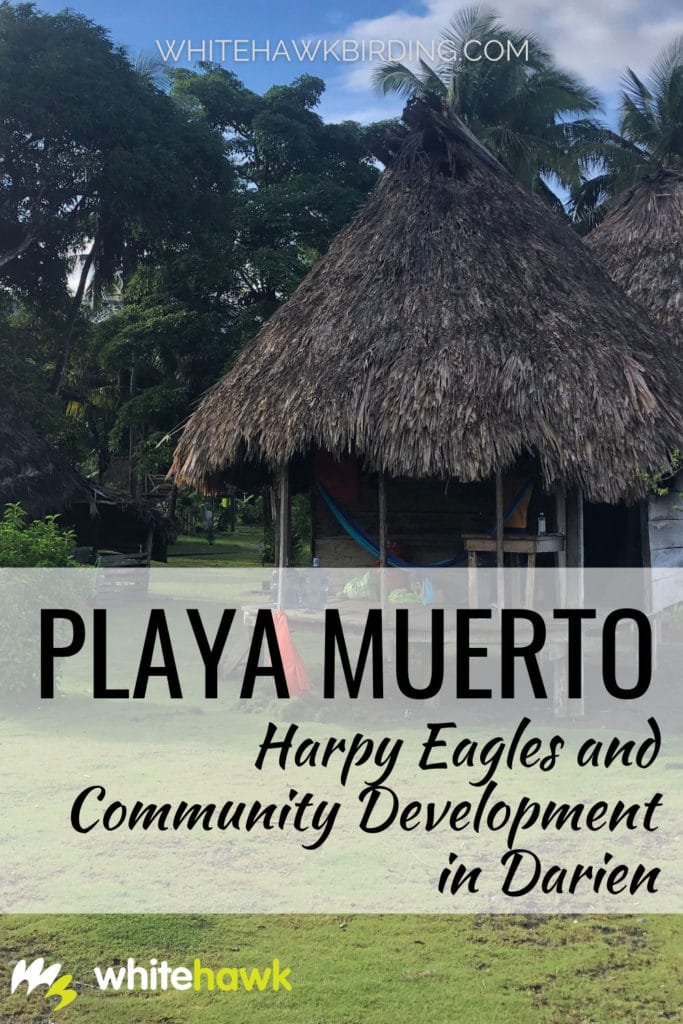Darien, Panama, is considered one of the most biodiverse places in the world. It is home to lush tropical forests, Harpy Eagles, jaguars, and a host of other incredible plants and animals. A trip there is a true “off the beaten path” experience. While it does hold some challenges, the rewards for taking a trip to this part of Panama are limitless. Playa Muerto is the only community found within Darien National Park. Approximately 50 houses dot the forest that grows along the Pacific Coast. In May, Edwin and I traveled there with Jose Vargas, a Harpy Eagle biologist with The Peregrine Fund, to conduct a bird identification and bird training workshop for 15 community members. In July, Jenn, Angel, and I returned for a second visit. We provided more training for community members interested in working as bird guides and naturalists.
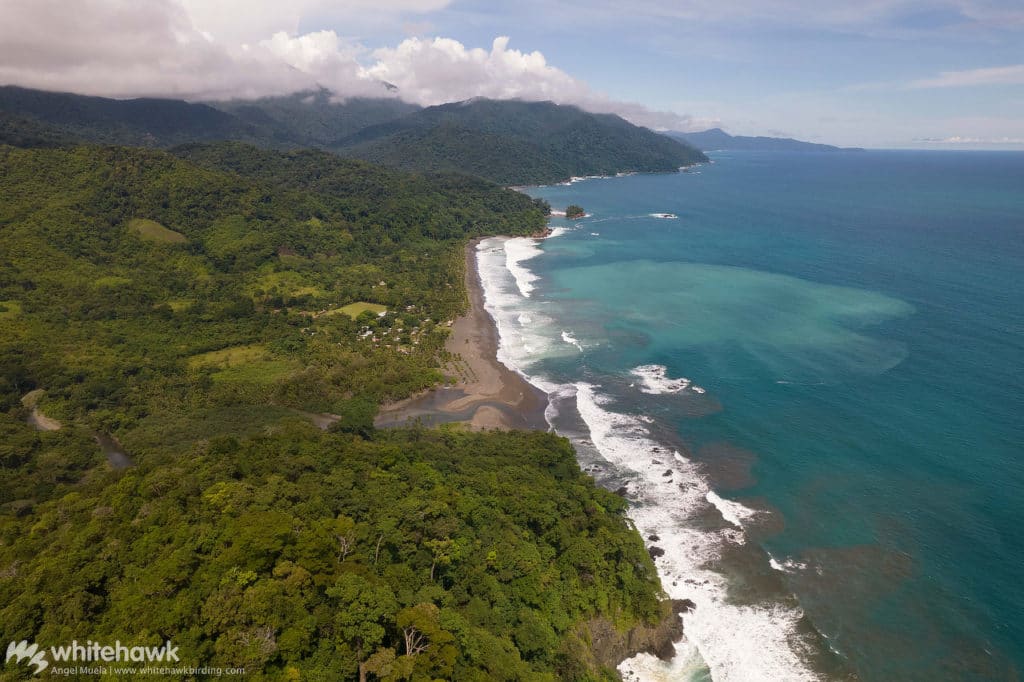
Getting to Playa Muerto
A trip to Playa Muerto begins with an early morning drive. From Panama City, it takes about four hours to get to the town of Meteti. Once out of the city, the scenery changes quickly with mixed views of forests, open pastures, small communities, and the lovely Lake Bayano. The roads are mostly good, with a few long stretches of potholes that require some skilled driving to avoid. After some quick stops to pick up supplies, we meet our friend and skilled captain, Rangel, in the port of Puerto Quimba. We loaded all of our gear onto the boat, and quickly set out. The day started off gorgeous and sunny. A flock of Orange-chinned parakeets flew overhead. Dolphins briefly surfaced. Brown Pelicans, Neotropic Cormorants, and Brown Boobies flew in graceful patterns above the sea.
After nearly three hours, we reached the shores of Playa Muerto. Maneuvering the boat onto shore takes some definite skills, as the waves here can be quite high and strong. After pushing the boat onto the sand, we stepped onto the pebbled beach. We hauled our gear just a few hundred feet to the thatch-roofed structures that would be our home for the next few nights.
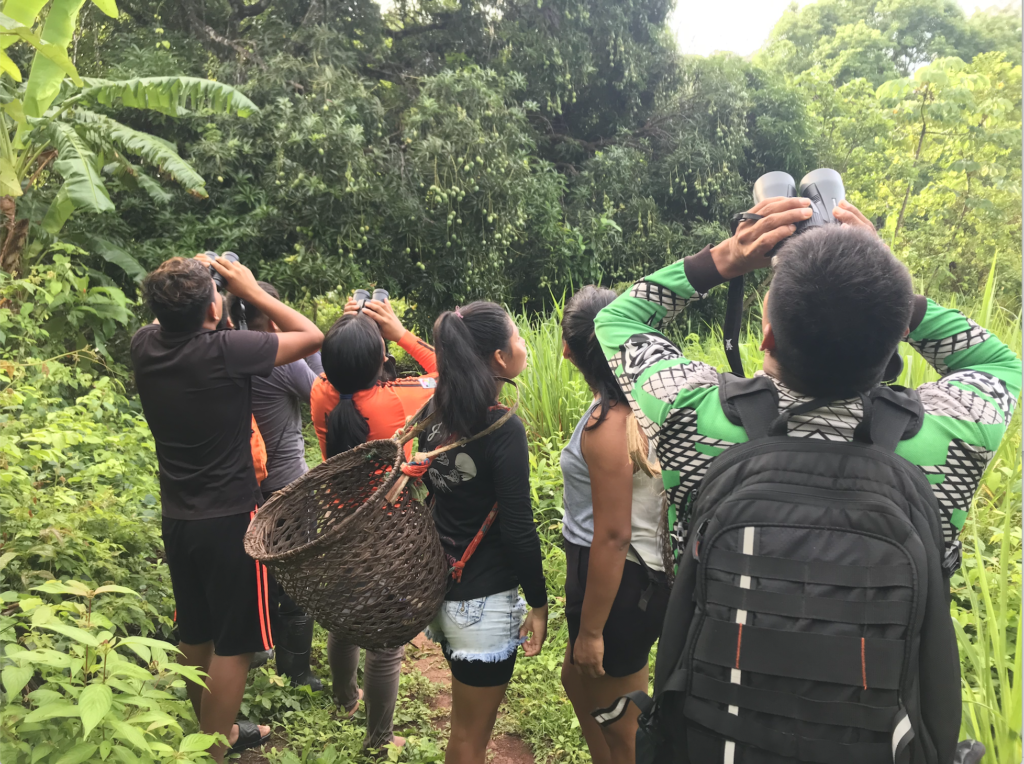
The Adventure to the Harpy Eagle nest
Deep in the rainforest of Darien National Park, approximately 4 km from Playa Muerto, a young Harpy Eagle has recently fledged from its nest. At this stage, even though the eaglet has left the nest, it will remain close. For the next year or so, it will remain in its parents’ territory until it is ready to hunt on its own. This offers a great opportunity for us to visit a Harpy Eagle nest site and see this magnificent eagle in the wild.
After an early breakfast, we head out and soon find ourselves walking along a narrow yet well-worn trail through the cultivated lands. They grow corn, rice, cassava, bananas, plantains, and raise pigs and chickens as their main food sources. Before we know it we are entering the forest edge, where fruiting trees such as mango and cacao form inviting groves. Then we enter the rainforest where trees grow over a hundred feet tall. The understory is full of a great diversity of plants and shrubs.
The anticipation builds as we know we are entering Harpy Eagle habitat, but there is still a long way to go. We reach the first stream crossing, and it’s time to get our feet wet! These rivers meander through the rainforest, and we cross them several times along the way to the Harpy nest. If the weather has been fair, the water level reaches just below our knees. If it has been raining, the strong current and higher water levels make these river crossings a good challenge and part of this great adventure!
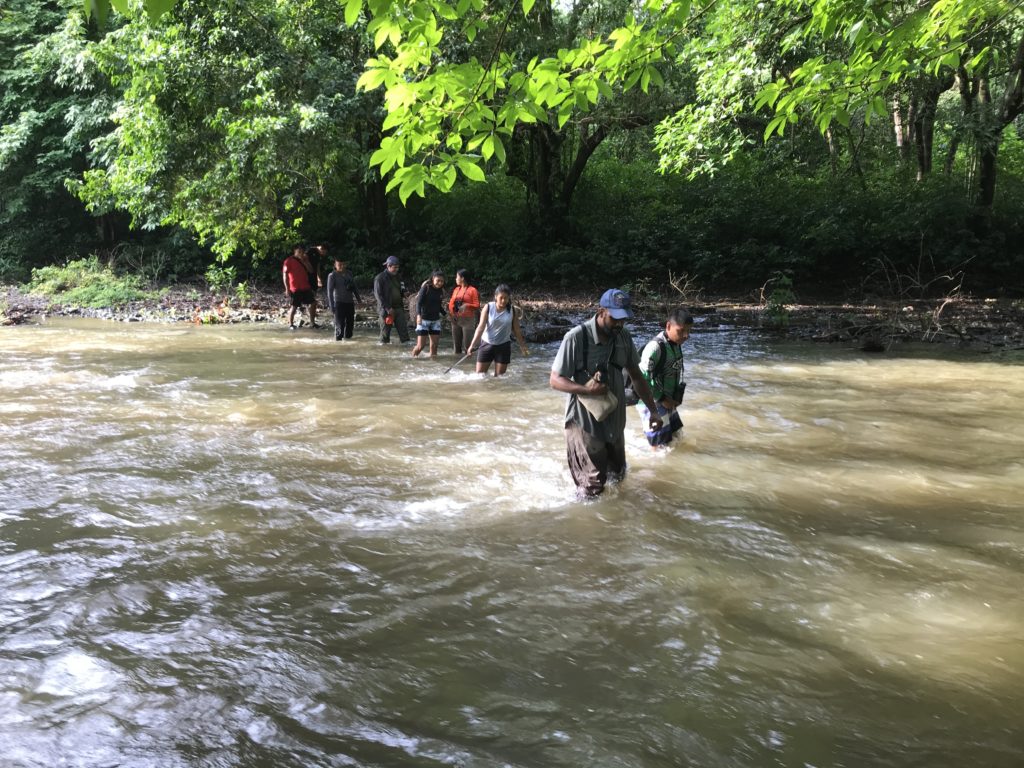
On our first trip to Playa Muerto, as a part of the bird guide and bird ID workshops, we took our time getting to the Harpy Eagle nest, birding along the way. We arrived at the nest after a few hours. On our second visit, we decided to go directly to the nest site, and bird on the way back. Walking to a Harpy Eagle nest builds much anticipation. The closer we get the more we can almost feel the mighty bird’s presence.
The first half of the walk is flat with river crossings; the second part through more mature forests has some small ups and downs and smaller stream crossings. After about an hour and a half, we arrive at a small camp area near the nest. We’re close now. We are silent from here on, so as not to disturb the nearby eagles. A final hike uphill on a muddy slope brings us to a blind where we can see the huge stick nest in a tall Almendro tree.
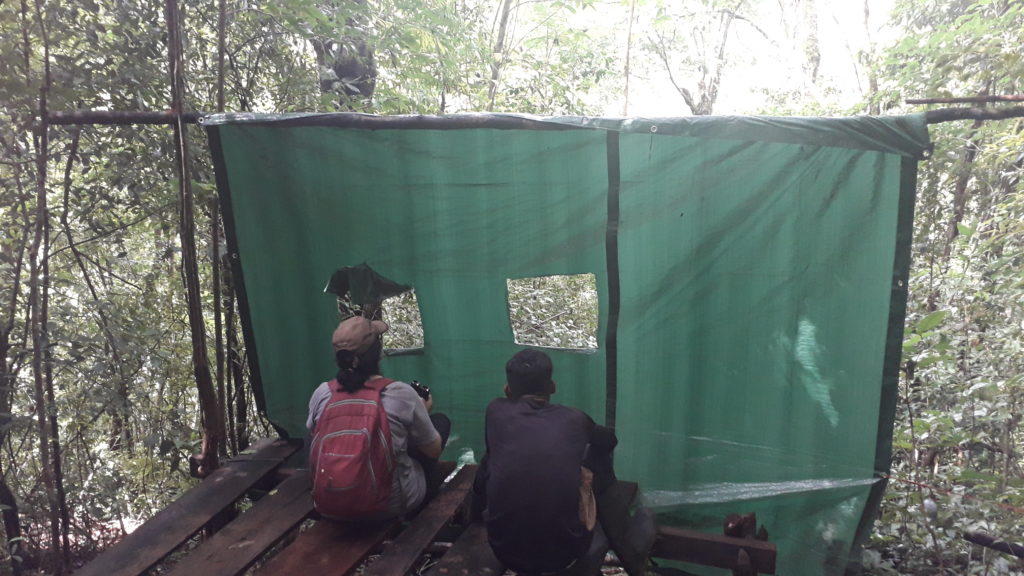
On our visit in May, the young eagle, around 5 months of age, was still in the nest. It was just weeks away from fledging. We watched from a safe distance not to disturb the eaglet or its parents, which were nowhere in sight. When we returned in June, the eaglet had fledged a couple of weeks prior to our visit. It was spotted perched just meters from the nest. To observe this young eagle during this major part in its development was a true blessing. At this point in its life, the adult eagles spend most of their time away from the nest. They only return on occasion to drop off food for the growing fledgling and will continue to do so for the next year or so.
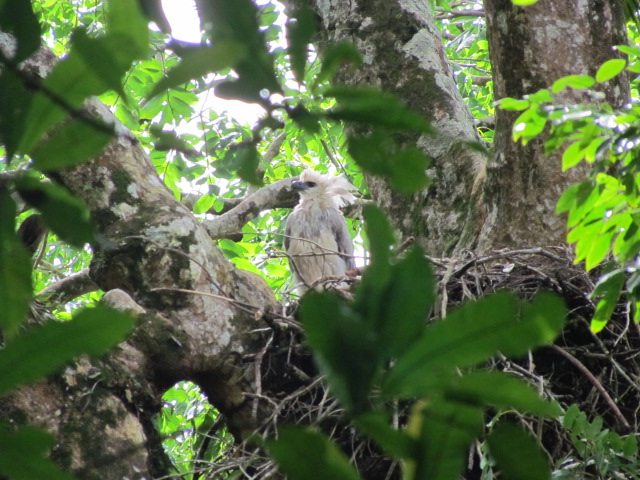
After our time at the Harpy Eagle nest, observing this bird as it spends its days in the rainforest canopy, we quietly retreat. From a different spot on the slope, our local guide, Alan, spots the eaglet from a better view. We once again revel in the striking beauty and immense size of this rare forest eagle among the giant trees. The hike back passes quickly, no doubt due to the pleasant relief from our anticipation of seeing the bird. An adventure to see a Harpy Eagle isn’t complete without a dip in a tranquil forest waterfall pool. On the way back, we did just that, cooling us off from the hot tropical sun beating down on us late in the morning. We continued birding along the way back to the community and arrived in time for lunch.
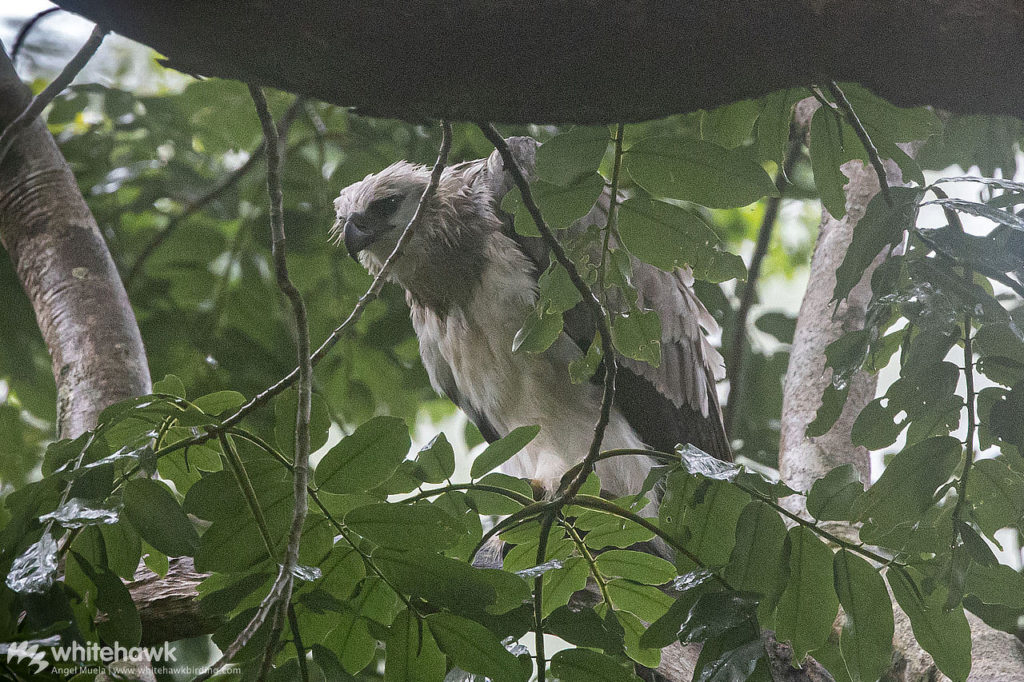
Guide Training and English Workshops in Playa Muerto
A big reason why we visit Playa Muerto is to work with some of the community members. Playa Muerto has long been a stopover spot for cruise ships passing along this coastline. The community welcomes tourists, shares their culture through presentations of dance, their artisan handicrafts, and local food. Playa Muerto’s tourism cooperative has constructed sleeping quarters, a bathroom, and a dining room to host guests to the community. Local guides show tourists around the community and on the trails to the river, lookouts, waterfalls, and other amazing natural features nearby.
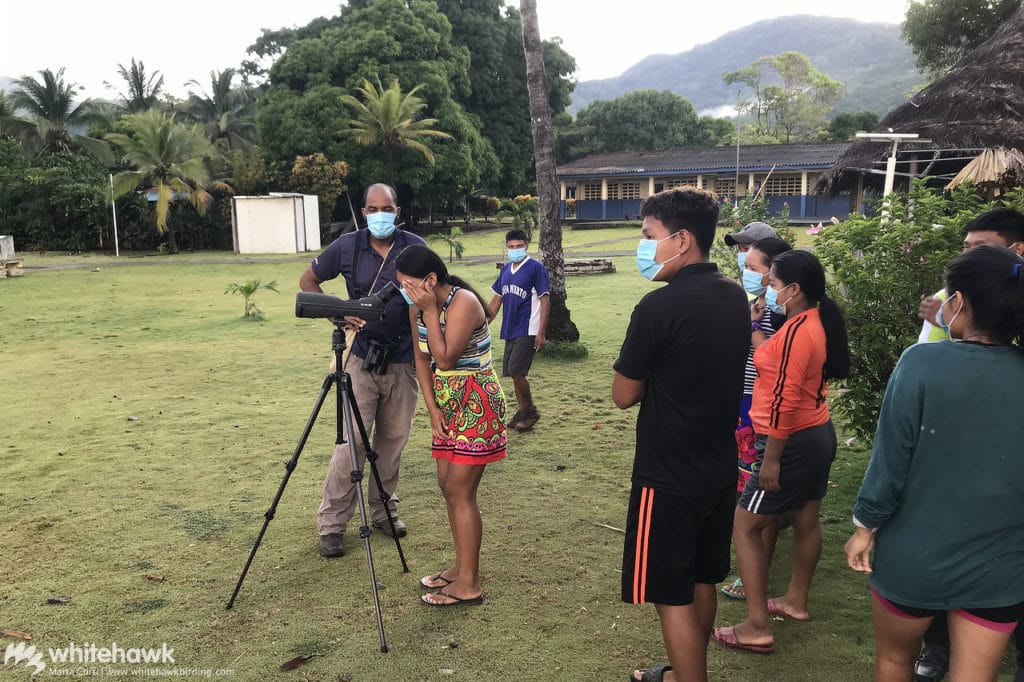
As birding tourism continues to rise, one of our objectives for these visits is to offer bird ID and guide training workshops. In May, Edwin and I spent over 8 hours with 15 members of the community on theoretical and practical bird guide and bird ID training. These workshops included the basics on how to ID birds, breaking it down to make it simple and fun. They also learned how to use field guides, how to point out birds in the field. They also started listening to bird calls and much more. We spent time around the community spotting and identifying the common species found there. This allowed the participants to get comfortable with the use of binoculars and spotting scopes. Jenn carried on the training in June with a practice session on IDing birds in the field guide.
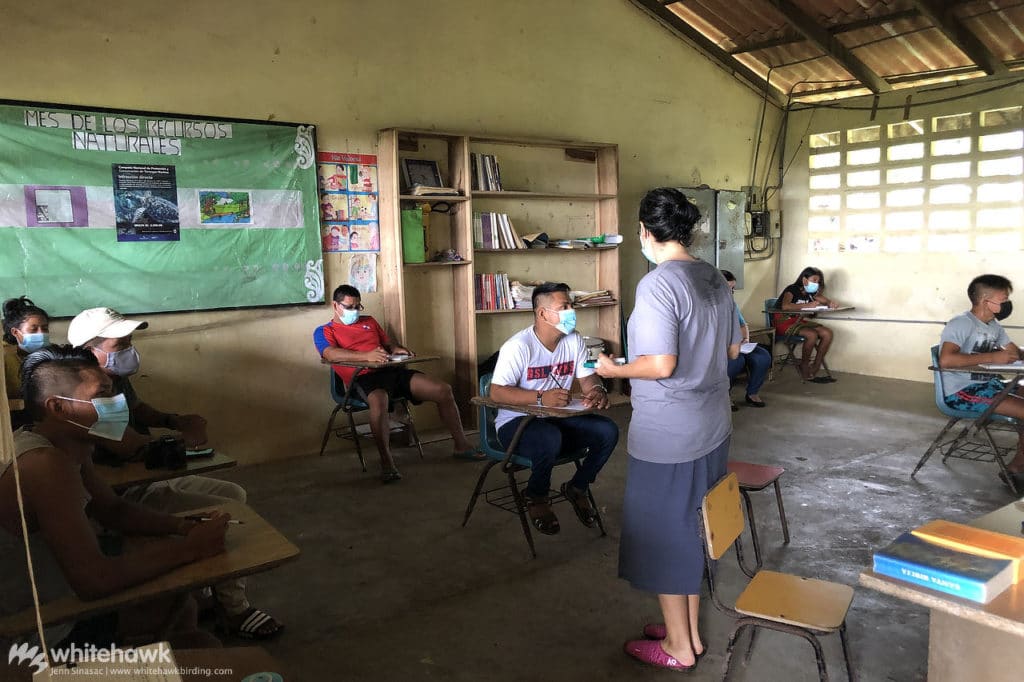
In June, I was asked to help some of the community’s artisans learn some English to help them sell their handicrafts when tourists come to visit. In one of the rooms of the three-room schoolhouse, I taught a short English class to 10 people, all eager to learn how to communicate in English. I focused on common questions that they may get from tourists: “How much does it cost?” “What is it made of?” and how to answer these questions: “twenty-five dollars” and “it is made from natural palm fibers.” We even worked on a little bit of bartering! They really valued the class, the help with pronunciation, and asked for more English classes on our future visits.
Visit Playa Muerto: An Unforgettable Experience in Darien
Whitehawk offers several opportunities for travel to Darien. Our recent work with Playa Muerto has proven enriching for us and for those who have joined us on the trips there so far. We will be offering more trips to this community. A visit will give travelers the opportunity to search for a Harpy Eagle in the wild, as well as to learn about the Embera people of Darien and if desired, and interact directly with the community. Contact us for more information about visiting Playa Muerto and Darien.
~ Marta
